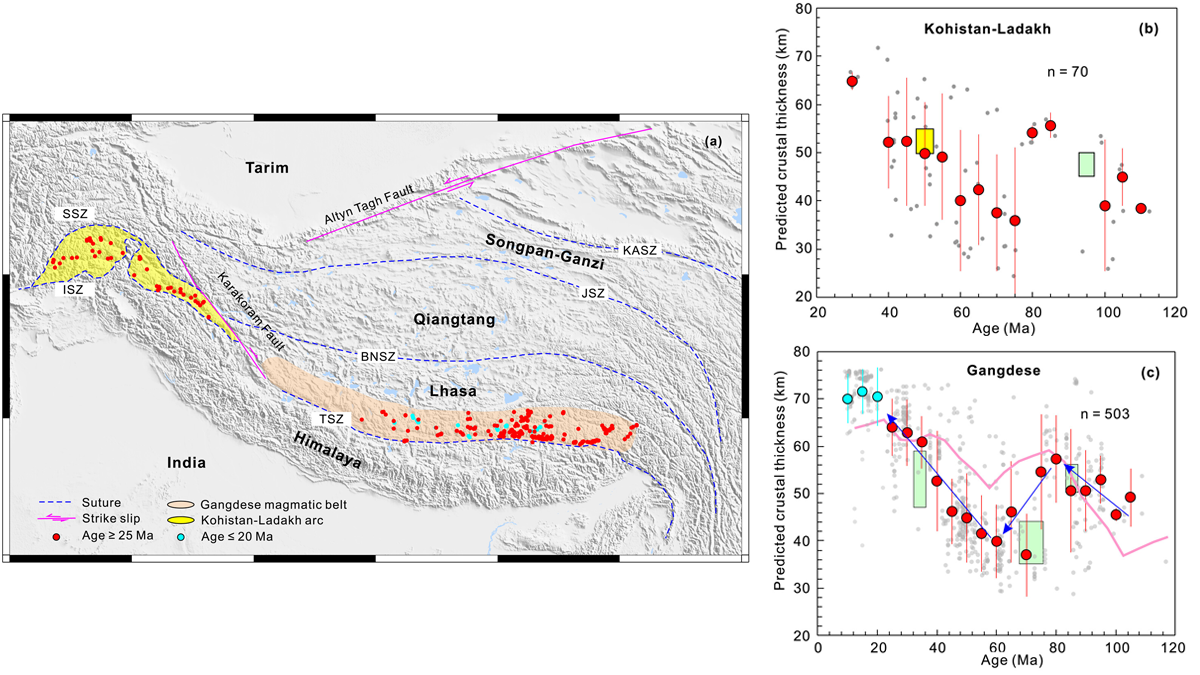Editors’ Highlights are summaries of recent papers by AGU’s journal editors.
Source: Journal of Geophysical Research: Solid Earth
The thickness of the continental crust has varied greatly over geologic time as continents have collided and rifted apart. However, quantifying crustal thickness in the past and how it has evolved over the duration of diverse tectonic events remains a difficult task. Conventional methods rely on geochemical proxies involving trace element ratios that are sensitive to minerals such as garnet, which are only stable in areas of thick crust. However, such proxies may break down in areas of anomalously thick crust, such as in continental collisions.
Guo and Yang [2023] train a machine learning algorithm on a large geochemical dataset and crustal thickness data obtained from geophysical surveys. They apply this method to several thick crust regions associated with subduction or continental collisions, including the Kohistan-Ladakh arc (Pakistan) and the Talkeetna arc (Alaska). The authors find that machine learning results overlap well with geochemical proxy data. Machine learning-based models trained on large geochemical and geophysical datasets are a promising tool for future studies of crustal evolution.
Citation: Guo, P., & Yang, T. (2023). Quantifying continental crust thickness using the machine learning method. Journal of Geophysical Research: Solid Earth, 128, e2022JB025970. https://doi.org/10.1029/2022JB025970
—Emily Chin, Associate Editor, JGR: Solid Earth

